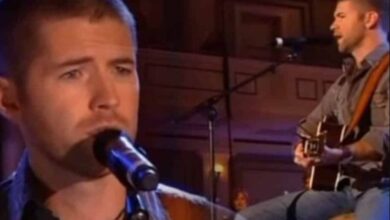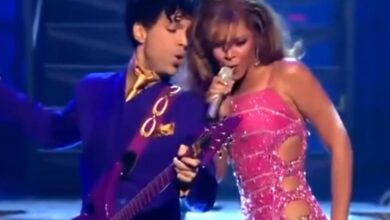This Dance Was All The Rage In The 1950s, Can You Remember It Today
In February 1958, “The Stroll” became a defining dance craze in American high schools and social gatherings, capturing the vibrancy and youthful exuberance of the rock ‘n’ roll era. This line dance, which began in African American communities, was propelled into mainstream popularity by television programs like Dick Clark’s “American Bandstand.” The dance quickly spread across the country, becoming a staple at sock hops and gym dances, where teenagers embraced its carefree spirit and communal fun.
“The Stroll” featured participants lining up in two rows, facing each other, with couples taking turns to walk down the center aisle in time to the music. The dance’s structure allowed for both collective participation and personal expression, making it a hit among the youth eager to showcase their individuality while being part of a larger trend. This blend of group and individual elements reflected the social dynamics of the 1950s, a decade marked by a burgeoning sense of identity and cultural transformation.
The song associated with this dance, also titled “The Stroll,” was performed by The Diamonds, a Canadian doo-wop group renowned for their smooth harmonies and engaging melodies. The Diamonds’ version of “The Stroll” played a crucial role in bringing the dance to a wider audience. Lead singer Dave Somerville’s baritone voice provided the perfect accompaniment to the dance’s infectious rhythm, guiding participants with his melodic charm and adding to the song’s popularity.
“The Stroll” rapidly became a cultural phenomenon, transcending racial and social barriers at a time when the United States was grappling with segregation. Its appeal was broad, resonating with a diverse audience due to its straightforward yet engaging format. The dance’s simplicity made it accessible to everyone, while its association with the energetic and optimistic vibe of post-war America made it particularly compelling for teenagers looking to express themselves.
As “The Stroll” gained momentum, it became a fixture at dance events nationwide, embodying the spirit of the era. The dance’s popularity highlighted a period of significant cultural change, where traditional social norms were being challenged and new forms of self-expression were emerging. The Stroll’s influence extended beyond dance floors, impacting music and popular culture, and leaving a lasting legacy in the annals of rock ‘n’ roll history.
Today, “The Stroll” remains a nostalgic symbol of the 1950s, representing a time when dance, music, and youthful exuberance combined to create a memorable cultural moment. Its place in history is secured by its role in shaping the social and cultural landscape of the era, and it continues to be celebrated as a quintessential part of rock ‘n’ roll history.





